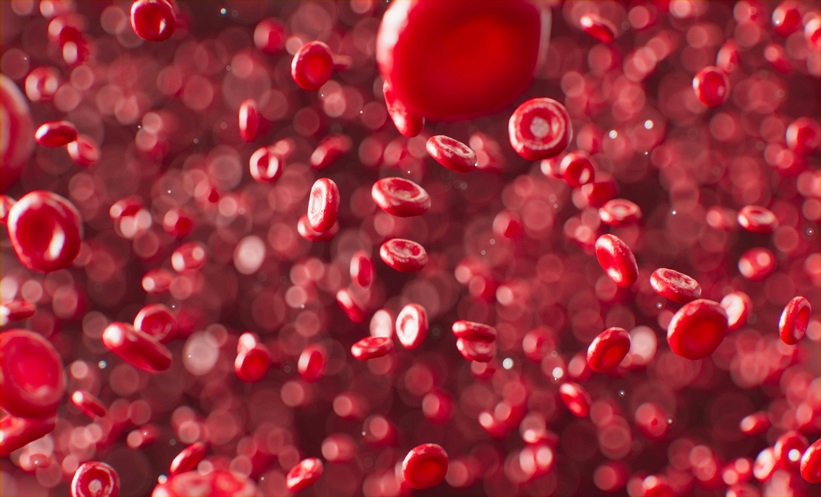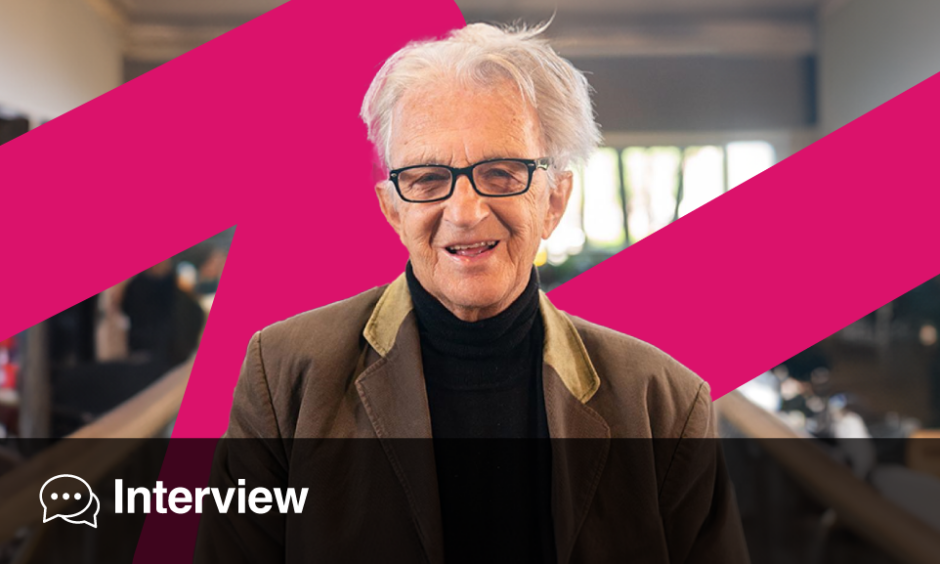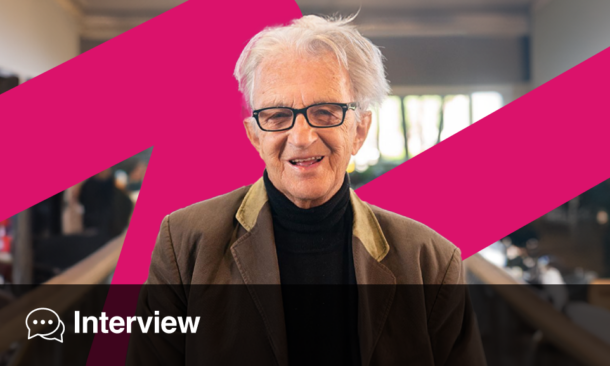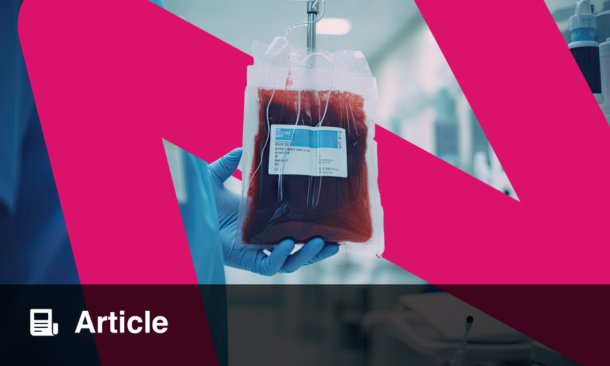Meeting Summary
Haemophilia is an ideal candidate for gene therapy as it is a single-gene disorder. There is a wide therapeutic window with low-level expression that could improve outcomes considerably, and efficacy is relatively easy to assess either by clinical outcome or laboratory measures.1,2 A number of viral vectors are currently under investigation in several clinical studies of haemophilia A and B, and a number of Phase I and II trials have been initiated with some already in Phase III.2,3 GENE-r8 and HOPE-B are two trials with extensive Phase III follow-up data.4-8 New therapies require new strategies in dealing with the treatment burden versus disease burden and how patients receiving gene therapy are monitored will be very important.
INTRODUCTION
Monogenic diseases such as haemophilia A and B are inherited conditions arising from mutations in a single gene. One defective gene leads to one missing protein, providing an interesting therapeutic target and a possible future blueprint for gene therapy in other diseases too.9,10 The most common type of gene therapy uses adeno-associated virus (AAV) vectors, where a correct copy of the defective gene is inserted into the AAV vector that is located in the nucleus of the cell, where it can be used for protein production.11 AAV gene therapy is under investigation in several clinical studies for the treatment of haemophilia A and B. This approach uses a recombinant viral vector to deliver a functional copy of Factor VIII (FVIII) or Factor IX (FIX) gene to the liver to provide FVIII or FIX expression. In the last year, a number of clinical studies have updated results on efficacy and safety, and a selection of these are discussed in this article.
Gene therapy management will change in the future, with the introduction of specialised interdisciplinary haemophilia comprehensive care and haemophilia treatment centres, and the ‘hub-and-spoke’ model is discussed in relation to the European Association for Haemophilia and Allied Disorders-European Haemophilia Consortium (EAHAD-EHC) joint statement and EAHAD Gene Therapy working group publication.12 The EAHAD and EHC joint statement on the ‘hub-and-spoke’ model was published to ensure that gene therapy can be prescribed for everyone and that patients are carefully monitored in expert centres. These specialist centres offer a wide range of clinical and laboratory services, providing the factor concentrates needed for home treatment and ensuring access to clinical specialists and an emergency department.13
The Haemophilia Treatment Landscape: An Overview of the Current Standard of Care
Annette von Drygalski and Greta Mulders
The current standard of care for haemophilia is lifelong treatment with coagulation factor replacement therapy, and people with haemophilia typically require chronic therapy for the prevention of severe bleeding.14-16 Prophylactic (regular) factor replacement is the standard of care for severe haemophilia to prevent or reduce bleeds, whereas episodic (on-demand) factor replacement is given to treat bleeding episodes, such as during surgery.17-20
The goal is to enable people with haemophilia to live healthy, normal lives, and several clinical guidelines recommend prophylaxis for severe haemophilia A and B.18-21 Prophylaxis aims to maintain haemostasis and prevent bleeding, especially joint haemorrhages, but there are several limitations.18-20,22 Low trough levels associated with breakthrough joint bleeds cannot be avoided and there is the potential for inhibitor development, which is especially pronounced in FVIII deficiency highlighting the patient’s need for individualisation. 23-26 Venous access is also an important consideration, especially in younger children and older adults. 23,24
Overall, the management of haemophilia imposes a significant economic burden on healthcare systems, and increasing costs associated with disease severity signifies a number of unmet needs within the current standard of care.27,28 Advances in treatment have undoubtedly improved mortality and reduced major complications but health equity still needs to be achieved.15
The Science Behind Haemophilia Gene Therapy: Where Are We in 2022?
Gili Kenet
The episomal AAV is an excellent gene delivery vector, with low potential immunogenicity. AAV is also non-inflammatory and non-pathogenic, but has a limitation in its small packaging capacity. Various viral vectors are currently under investigation in several clinical studies of haemophilia A and B and transgenes include FVIII B-domain deleted and FIX high-activity variants.2,3 Durability of expression is affected over time, with the episome lost in daughter cells through gene silencing or cell death. In haemophilia dog models, long-term expression of >10 years exists, and clinical trials began over a decade ago, but long-term follow-up is still required to firmly establish the safety profile of gene therapy.29-32
Potential safety issues of concern include genotoxicity, overexpression, immunotoxicity, and horizontal and vertical transmission, which will all need to be addressed in the future.2,33,34 Additionally, how patients are monitored will be very important, and new therapies will require new strategies in dealing with the new treatment burden as opposed to the disease burden.
Variability of Response to Experimental Therapy and Long-Term Outcomes
John Rasko
Long-term follow-up is critical for improving understanding of haemophilia and AAV-based gene therapy.35 The inter-patient variability and long-term durability observed in clinical trials have revealed substantial variation in attaining and sustaining expression levels, with marked differences between patients.31,36 On the other hand, long-term durability of clinical benefit is unknown and evidence suggests that the potential to increase or restore function in affected tissues or cells is present over a long period.30,37 Nonetheless, gene therapy for haemophilia remains under clinical investigation and larger patient numbers in Phase III studies may provide further insight.35,38 Potential factors affecting the variability of response to AAV gene therapy include pre-existing liver disease, current medications and medical disorders, unknown genetic factors, and the target cell, given that hepatocytes are not the natural site of endogenous FVIII production.39-41 However, inter-patient variability is not restricted to gene therapy and is also seen with currently used haemophilia treatments; patients treated with FVIII show a four-fold variation in the half-life of the clotting factor concentrate. Although this variability of response is not unique to AAV-gene therapy, it is certainly a feature of current AAV-gene therapy trials.
Identifying the Candidates for Haemophilia Gene Therapy Trials: Key Considerations in Patient Selection
Andreas Tiede
Eligibility
Gene therapy criteria may change over time due to evidence from clinical trials and regulatory requirements. Currently, trials are beginning to include patients aged 12 years and above; however, for younger children, there is concern regarding progressive loss of vector genomes when the liver is still under development and during hepatocellular proliferation.42 In elderly patients, there is a much higher prevalence of comorbidities that may compound their eligibility for gene therapy trials, and perhaps also the risk after gene therapy. When someone has lived with severe haemophilia for decades, an important question is whether there is a specific age after which gene therapy may no longer be beneficial. Some patients may also be infrequent bleeders; these patients may have a milder phenotype, are not always on prophylaxis and may not be interested in the potential benefits of gene therapy. In clinical trials, the outcomes of these infrequent bleeder patients would not be comparable to the rest of the haemophilia population.
Liver Disease
Gene therapy is currently directed towards the liver, and it is natural to exclude patients with the perceived highest risk of liver injury. Currently, excluded patients are those who infected with hepatitis C virus (HCV; detectable viral load, or antiretroviral therapy in the previous 6 months), or hepatitis B virus (detectable viral load, or current antiretroviral therapy),43 or have chronic liver disease defined by portal hypertension, splenomegaly, hepatic encephalopathy, or signs of liver fibrosis (FibroScan® [Echosens, Waltham, Massachusetts, USA]: >8.3 kPa units; FibroTest/FibroSURE: >0.48; or aspartate aminotransferase [AST] to platelet ratio: >1). Within the limits of eligibility criteria, HCV status, or mild HCV-related fibrosis did not seem to adversely affect outcomes in gene therapy studies.36 However, the potential challenge that occurs in the liver after gene therapy has to be considered, and there are questions about the risk of ongoing liver inflammation or even hepatocellular carcinoma (HCC), and patients are closely followed. The single case of HCC in a haemophilia B gene therapy trial reported was a patient with several risk factors, including a history of hepatitis C and B infection.8 After investigation, and as HCC occurred so early after gene therapy, it was concluded that the gene therapy was unlikely to have contributed to the HCC. In a general risk management strategy, it will still be important to closely observe all those people with pre-existing liver disease once they undergo gene therapy.
Pre-existing Neutralising Anti-Adeno-Associated Virus Antibodies
Strategies to overcome neutralising anti-AAV antibodies may be important when considering bringing gene therapy to as much of the haemophilia population as possible.41 In general, vector-oriented strategies are more advanced including the use of AAV serotype with lower seroprevalence or the use of novel capsids from non-human sources, capsid engineering, higher vector dosing, and the use of decoys such as empty capsids.44,45 In the future, measures such as immunosuppression, non-specific cleavage of circulating immunoglobulins, plasmapheresis, or isolation of the target tissue to bring gene therapy to those who have already received it in the past or who have high titres of such neutralising anti-AAV antibodies might be used.44,45
Gene therapy holds the potential to correct the gene defect in haemoglobin A and B over a prolonged period, and this is what we all hope for.46 Current trials have to exclude specific patient populations such as children, patients with comorbidities, and elderly patients, but with growing evidence and experience, extending the patient populations for gene therapy is being investigated.47,48 Education gained through the successes, the risks and the fate of gene therapy, will ultimately help those patients currently excluded.
Thinking Differently in Haemophilia: Gene Therapy ‘Hub-and-Spoke’ Model
Ingrid Pabinger
New views on treatment management have an impact on haemophilia care with gene therapy; additional and changing responsibilities include the ability to prepare and store gene therapy products and the completion of patient eligibility tests, follow-up, and monitoring while maintaining a co-ordinated approach to management by all stakeholders. Safety management of adverse events and registry data collection will also be very important.
A ‘hub-and-spoke’ model has been proposed to facilitate the delivery of gene therapy in haemophilia centres and needs to be modifiable to suit different countries and regions.49 The ‘hub’ centre will be the experienced centre in both comprehensive care and gene therapy as well as being the dosing centre. The ‘spoke’ centre will be a haemophilia treatment management centre that has minimal experience with gene therapy and is likely the home centre for the patient.
From Informed Patient to Drug Infusion in a ‘Hub’ Centre
Johannes Oldenburg
The Informed Patient
Gene therapy in haemophilia potentially represents a new paradigm of treatment. A fully informed patient will require information on the background and mode of action of gene therapy, eligibility, the procedure, and short- and long-term safety, and follow-up requirements. The model of ‘hub-and-spoke’ centres should provide access to a safe and efficient gene therapy experience for all patients.
Patient eligibility will be dependent upon several criteria such as the existence of pre-existing antibodies against AAV-isotypes used in the vector as these could be preventive against the gene therapy protocol.49 Gene therapy targets the liver cells so there should be no liver disease.49 Currently, eligibility requirements state there should be no inhibitor present but, in the future, there will be protocols for inhibitor patient eligibility. Establishing relevant comorbidities that may prevent a patient from receiving gene therapy will be necessary, as well as explaining the full impact on a person’s lifestyle, such as alcohol use and family planning.49 Alcohol needs to be avoided before the gene therapy starts as the liver enzymes play an important role and need to be readable. Contraception should be used for as long as residual DNA or residuals of the gene transfer can be detected in fluids of the body.
To date, we have up to 10 years of experience of safety in gene therapy carried out in humans but only in a small number of patients. It will be essential to learn from the increasing number of patients undergoing gene therapy protocols, especially in haemophilia A, that there is safety in this therapy in the long term.
‘Hub-and-Spoke’ Model
The model demonstrates how patients may be referred from one haemophilia treatment centre to another, and close communication between centres will be vital.49 A formalised division of tasks may exist between centres outlining the different activities necessary and aligning each to either a ‘hub’ or ‘spoke’ centre.49 For example, the ‘hub’ centre could be responsible for ordering, preparation, and infusion of gene therapy, whereas patient information and education, AAV5 antibody testing and informed patient consent may be done by the ‘spoke’ centre (local).49
When patients are referred for dosing, reviewing the eligibility criteria is essential to identify potential gene therapy candidates. A specific test can identify the presence of pre-existing antibodies and allergies to the product or ingredients need to be determined.49 Dosing calculations are patient-specific and once ordered the dose needs to be stored according to specific sterile conditions before being prepared for intravenous infusion. The patient arrives the day before infusion is planned. The infusion procedure takes place in the out-patient clinic over a period of several hours from the point of preparing the dosing solution to post-infusion resting before the patient can be released. At this point, the patient’s life will change dramatically with the possibility of no further infusions of the clotting factor needed.
Management and Follow-up of Patients Post-gene Therapy: Experience from Clinical Trials
Frank Leebeck
The registration of efficacy data and side effects means that long-term follow-up of patients is needed. Follow-up begins after the patient is discharged from the clinic and commences with measurement of FVIII or FIX levels. However, patient expectations of gene therapy may differ from that of doctors, and there are several things to consider on follow-up. Factor levels achieved after gene therapy are variable. For patients with haemophilia A (FVIII), the highest levels appear to be achieved after 26 weeks, gradually decreasing over time.50 If a patient requires major surgery, it is important to know exactly how much time has elapsed since gene therapy and for the patient to understand how this affects factor levels. For patients with haemophilia B (FIX), once stable levels are reached (some months after gene therapy), these may remain more stable over time than that observed in patients with haemophilia A. Treatment of bleeding events after gene therapy are also important during follow-up and it is important to note that patient compliance with advice to cease alcohol consumption and being mindful of medication use, may diminish after the first year. A well-known immune response to the capsid can also occur in patients, especially in the first 3 months of their gene therapy, which may lead to liver function abnormalities requiring immediate treatment. This immune response is an important side effect and can lead to reduced expression of FVIII or FIX with patients losing the response that has been achieved in gene therapy. Notably, patients will need help to cope with their new identity and to understand how they might now take part in different lifestyle activities such as exercise.
Some universal principles for the introduction of gene therapy have been established, which have patients at the centre of decision-making; one of the most important is that the safe introduction of any potential commercial gene therapy with lifelong follow-up is paramount to ensuring long-term success.51 Within the various haemophilia centres there may be some overlap of responsibilities to ensure that patients are carefully managed, although challenges exist when specific responsibilities for each type of centre are not defined. To address this, recommendations have been published on which type of centre is responsible for the different stages of follow-up, data collection, and the responsibilities of the multidisciplinary team.49 Ultimately, to fulfil a global registry of long-term outcomes of gene therapy will be challenging and require much work to document the demographics, diagnosis, medical or clinical history, as well as the safety, efficacy, the number of surgeries, health-related quality of life, and mortality data for each follow-up visit.52
Many questions exist about management and follow-up. For example, who collects and stores the data, who treats the side effects, and are assays used in each centre comparable? These questions along with issues on reimbursement, resources, and who is ultimately responsible for the patient, all require essential communication between the ‘hub-and-spoke’ centres.51 Solving these important issues will require strict follow-up in the first year after gene therapy in either a ‘hub’ or ‘spoke’ centre and the use of teleconsulting is beneficial for patient care as well as optimising availability and communication with the interdisciplinary team. Centralised laboratories are advised for the measurement of factor levels and immunological tests to ensure consistency between different centres.
The Haemophilia Nurse and Patient Advocacy Perspective on Gene Therapy Management
Greta Mulders and Amanda Bok
There is a need to consider the changing goals, perspectives, needs, and expectations of patients as well as those of the healthcare system for this patient community. Individuals benefit from a more robust support system and knowledge gained will be important to support the introduction and maintenance of such innovative therapies. A clinical trial experience is always going to be different to real life and patients should be committed to the more intense follow-up involved. Efficacy and safety concerns pre-gene therapy often change post-gene therapy. Understanding how they can still pass on the mutated gene to children, that the therapy will not resolve joint damage, and lifestyle modifications will be needed allows patients to appreciate that the therapy is not a cure. A long-term follow-up adherence plan is crucial for continuous testing as patients may still require factor replacement products during surgery or traumatic bleeds. Durability beyond 5 years is not yet known, and the side effects of immunosuppression are important to consider.
With any new treatment, more visits are needed versus the standard of care. Patients need to be well-informed and understand their gene therapy well enough to explain it to their family and caregivers. Adjusting from a severe to a mild phenotype requires confidence and trust in the body and mind for patients to adjust to this difficult transition, and these patients will need different management than individuals with mild haemophilia.53 However, management might become easier than originally thought with the advent of telemedicine, which has increased in use due to the COVID-19 pandemic. This may help alleviate the burden of the number of visits needed during follow-up. The key to success is transparency and for patients to be kept fully informed of clinical research progress.
The word ‘freedom’ increasingly appears in the vocabulary of the patient population with haemophilia, referring not only to therapeutic freedom but also to the psychosocial effects of that therapeutic burden, and the patient’s ties to existing treatment centres. Individuals benefit from a more robust support system and knowledge gained will be important to support the introduction and maintenance of such innovative gene therapies in haemophilia. Gene therapy and more generally, precision medicine, is a huge shift in paradigm, both to patients and the healthcare system and with a relatively young network of centres is still a work in progress. Thanks to patients who take part in clinical trials we are able to obtain insights into what the real-world experience might look like for gene therapy patients. One particular aspect, highlighted by such patients, is that psychological support has lagged behind in current haemophilia treatment and will be needed more than ever with the introduction of new gene therapies, not only for patients but also for their families and caregivers.
The EAHAD-EHC joint statement calls for all first-generation gene therapies to be managed using a ‘hub-and-spoke’ model, and underscores how advanced planning is necessary to ensure that all systems are fit for purpose.12 How can we increase the awareness and understanding of gene therapy in local centres? In such uncertain new times, this will require a strong partnership approach. Healthcare providers need to educate patients so that they can understand the learnings and expectations, and how we can meet them. National Haemophilia Societies have a role to play and would be excellent partners to the local centres.
Gene Therapy and State of the Art in Haemophilia
Paul Batty, Michiel Coppens, Wolfgang Miesbach, and Johnny Mahlangu
AAV Gene Therapy: Current Status – Efficacy and Safety
Good efficacy has been seen in clinical gene therapy studies using AAV. However, comparison of the different data is complex due to differences in vectors and production methods, and of how studies are reported. As already discussed, there are a number of unknowns regarding the variability and durability of FVIII and FIX expression. Some of the adverse events observed as infusion-related reactions appear to occur in ≥10% of participants, and these generally resolve with simple conservative measures allowing the infusion to be completed. The most common adverse event is an elevation in alanine transaminase (ALT) levels, leading to prolonged corticosteroid usage in participants. As the management of ALT elevation differs between clinical trials, there is a need for a greater understanding of the immune mechanisms of these reactions and of the ALT/AST ratio from the hepatology viewpoint. Long-term follow-up in clinical and pre-clinical studies reported to date have shown no adverse events of note.
The Clinical Trials: Update and Summary of Results from Phase I/II and Phase II Studies
Haemophilia A: dirloctocogene samoparvovec
Phase I or II
A dose-escalation study in males ≥18 years of age.54 Doses were between 5×1011 vg/kg and 2×1012 vg/kg, with follow-up at an average of 36.6 months (5.5–50.3 months).54 For those who maintained expression, after 1 year the average one-stage FVIII activity was 11.0 (±6.8%) IU/dL and expression was stable. There was an improvement in the median annualised bleeding rate (ABR) from 8.5 events/year prior to the study to 0.3 events after treatment.54 A single infusion-related reaction occurred 12 hours after infusion, which was resolved in 72 hours. Elevation in ALT enzymes occurred in 39% (n=7) of participants in the 2.0×1012 and 1.5×1012 cohorts. One serious adverse event with Grade 2 elevation required admission and two participants lost vector expression.54 Corticosteroid use was on a reactive basis on evidence of a capsid immune response.54
Haemophilia A: valoctocogene roxaparvovec
Phase I or II
Males ≥18 years of age with severe haemophilia A and no history of inhibitors or anti-AAV antibodies received valoctocogene roxaparvovec in a single dose of 6×1013 vg/kg (n=7) and followed up for 5 years, or 4×1013 vg/kg (n=6) and followed up for 4 years. Mean chromogenic FVIII activity was 11.6 (median: 8.2) IU/dL at 5-year follow-up in the 6×1013 vg/kg cohort, and 5.6 (median: 4.8) IU/dL in the 4×1013 vg/kg cohort.50 A serious adverse event of a salivary gland carcinoma was not attributed to treatment.
Phase III (GENE-r8)
Males ≥18 years of age (N=134) with severe haemophilia A (FVIII: ≤1 IU/dL)4,5 were dosed with valoctocogene roxaparvovec at 6×1013 vg/kg. Patients with pre-existing antibodies were excluded and the primary endpoint was 12-month FVIII activity. The mean FVIII activity level at Month 12 was 42.9 (median: 23.9) IU/dL, prophylaxis was discontinued in 99% of patients, and there was a reduction from baseline of the mean ABR by 85% (p<0.0001). At Month 24, mean FVIII activity level was 23 (median: 11.8) IU/dL. After gene therapy, 79% of patients did not require treatment for bleeds.5 Infusion-related reactions occurred in 37.3% (n=50).5 Adverse events included elevation in ALT enzymes (119/134; 89%) requiring steroid treatment,55 headache (41%; n=55), arthralgia (40%; n=53), nausea (38%; n=51), AST increase (35%; n=47), fatigue (30%; n=40), and 106 (79.1%) received corticosteroid treatment at 8.1 weeks over 230 days duration.
Haemophilia B: etranacogene dezaparvovec
Phase III (HOPE-B)
Males ≥18 years of age with haemophilia B (FIX: ≤2 IU/dL) after 1 year of follow-up (N=53) were dosed with etranacogene dezaparvovec 2×1013 vg/kg and one patient received a partial (10%) dose. Patients with pre-existing anti-AAV antibodies were included (n=23; 42.6%). The primary endpoint was a 6–18-month ABR versus lead-in period before gene therapy. At 6 months, the mean FIX activity level was 39.0% and 41.5% at 12 months; prophylaxis was discontinued in 96.3%, and there were two non-responders. Mean FIX activity levels of 36.9 IU/dL have been sustained at 18-months post-treatment. The mean ABR decreased by 67% with no treated bleeds in 83% of patients (6–12 months). FIX levels of 32.7% and 41.3% at Week 26 were reported in positive and negative neutralising anti-AAV antibody groups, respectively. There were ALT elevations requiring steroid treatment, headache, and influenza-like illness in 16.7%, 14.8%, and 13% of patients, respectively. Infusion-related reactions in 13% of participants (n=7) were resolved with temporary interruption or reduced infusion rate and supportive medications. FIX expression was maintained.56 One reported death and one HCC event were unrelated to study treatment.8 Transaminase increase in nine participants resulted in all being treated with corticosteroids with a mean duration of 79 days. The Haemophilia Quality of Life Questionnaire for Adults (Haem-A-QoL) assessment revealed significant improvement from baseline with a total percentage change of 21.5% (p<0.0001).
CONCLUSION
The goal of haemophilia therapy is the rebalancing of haemostasis and, since the 1950s, there is no doubt that improvements in therapy have transformed the lives of people with haemophilia.17,48,57 In particular for patients with haemophilia B, the recent introduction of long-acting recombinant FIX products have provided them with a more normal lifestyle. Also, with improved management of haemophilia and extended prophylaxis regimens, greater dosing flexibility is offered. There is no doubt that in the future, people with haemophilia will have multiple treatment options and shared decision-making with their multidisciplinary team on the best course of haemophilia management.
The ‘hub-and-spoke’ model convincingly offers patients the opportunity to receive gene therapy, independent of their location, their extent of knowledge, and their experience of the local haemophilia centre. Awareness needs to be raised and increased education for patients and healthcare professionals is crucial as most follow-up will be with local spoke centres. There are unknowns with any new therapy, and gene therapy is no different. The extent of expression and the durability of expression is hard to predict after gene therapy and, importantly, it is unknown how long the effects of the therapy will last.
One of the key questions for gene therapy in the future will be whether variability is product-specific or disease-specific and whether there will be long-term side effects of this once-only treatment. The biggest safety concern is whether integrating DNA into a liver cell could disrupt the liver cell cycle, leading to liver cancer. Keeping a close eye on adverse events will be critical to the success of gene therapy in the future. Once reimbursement issues are solved, European Medicines Agency (EMA) approval for gene therapy could be a reality in 2022.








